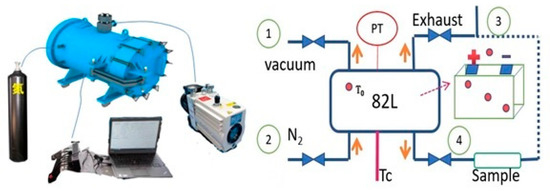ksmithaz1
Solar / EV Junkie
Occams Razor. Let's put a relatively sealed up utility room in the bottom of a house and put a boiler in it. Then throw a PV system with some batteries in there along with it. When it blows up blame it on the batteries.
In another thread a guy was talking going off-grid and putting propane in to heat / cook along with a PV setup. I suggested running the propane to a generator in an outbuilding with all the PV system, use a heat pump for the house and a wood / pellet stove inside for brutal cold days. The reasoning should be obvious. You want to seal up your house pretty tight and well insulated against the cold. This means all the airflow inside is forced, any gas that leaks stays inside. No gas in the house no invisible combustibles that are easily ignitable. Wood generally will not ignite spontaneously from vapors and a spark created by lighting a candle in the living room. If you want to run gas appliances inside, more power to you, but not me, never again. I'm lucky to be alive, someone else in this thread also described a similar incendent. The problem with gas is you just can't see it, and noses are amazing about filtering out repeated smells. Sensors can fail. Dunno if this was gas or not, boiler could have been oil fired, but most of Germany uses natural gas not heating oil. It's just too easy to have a gas leak, and not know about it within a reasonable time frame.
Battery fumes from LifePO4 causing an explosion, while remotely possible, are highly improbable.
In another thread a guy was talking going off-grid and putting propane in to heat / cook along with a PV setup. I suggested running the propane to a generator in an outbuilding with all the PV system, use a heat pump for the house and a wood / pellet stove inside for brutal cold days. The reasoning should be obvious. You want to seal up your house pretty tight and well insulated against the cold. This means all the airflow inside is forced, any gas that leaks stays inside. No gas in the house no invisible combustibles that are easily ignitable. Wood generally will not ignite spontaneously from vapors and a spark created by lighting a candle in the living room. If you want to run gas appliances inside, more power to you, but not me, never again. I'm lucky to be alive, someone else in this thread also described a similar incendent. The problem with gas is you just can't see it, and noses are amazing about filtering out repeated smells. Sensors can fail. Dunno if this was gas or not, boiler could have been oil fired, but most of Germany uses natural gas not heating oil. It's just too easy to have a gas leak, and not know about it within a reasonable time frame.
Battery fumes from LifePO4 causing an explosion, while remotely possible, are highly improbable.







![IMG_0484[1].JPG IMG_0484[1].JPG](https://diysolarforum.com/data/attachments/178/178807-5c4032dc070ec6537801529bd070c136.jpg)